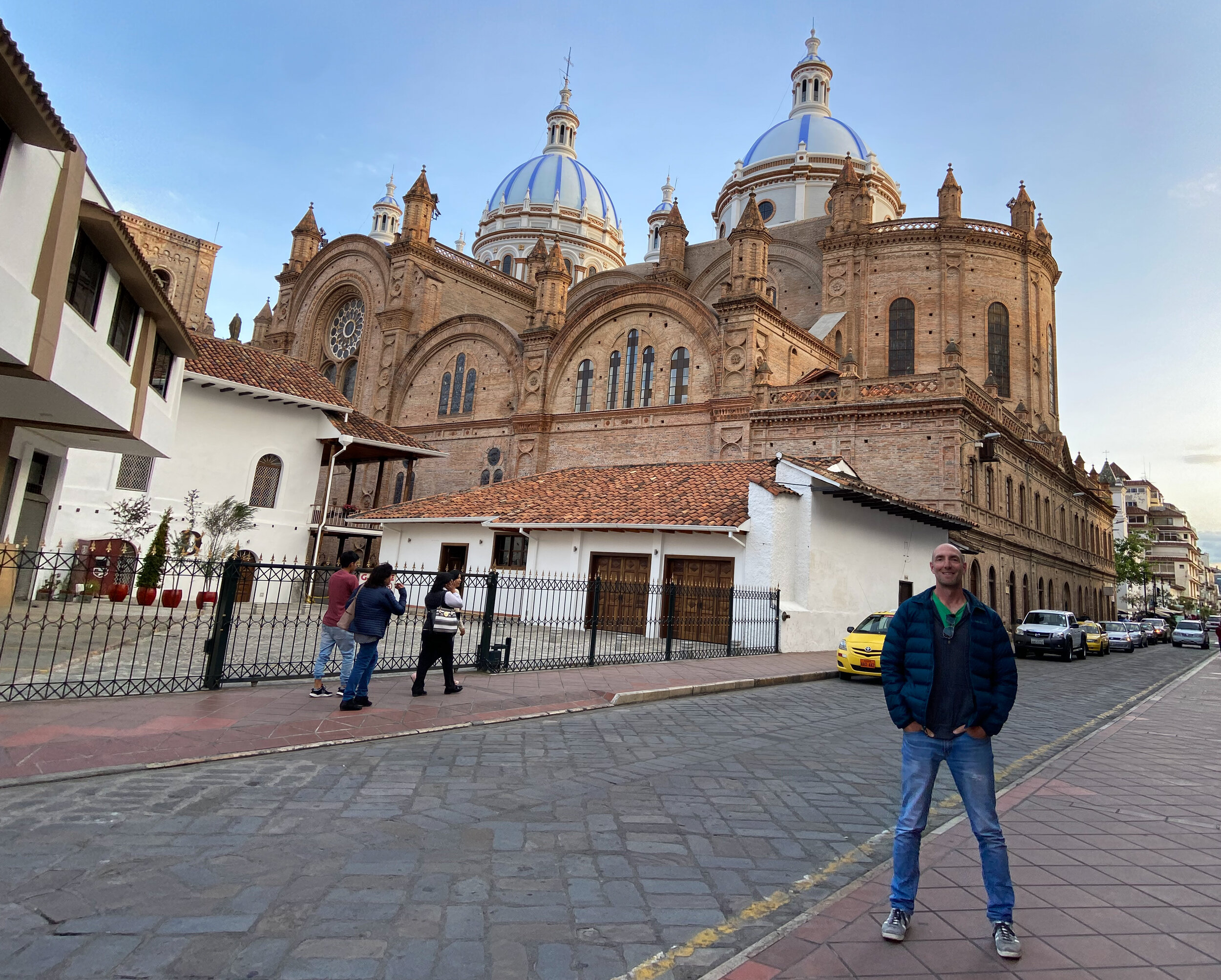Cuenca is the capital and largest city of the Azuay Province. While known mainly for its textile making and flower exports, Cuenca is also quickly becoming an expat destination to foreigners looking for an affordable place to retire. With around 330,000 people, Cuenca is a beautiful medium-sized city with none of the traffic, crime, congestion, or pollution that plague other larger South American cities.

Our final day in Ecuador was spent on a city tour of Cuenca with Flavio. We drove to a scenic lookout spot above the city for a panoramic view. We then visited several churches and museums and walked around the historic city center. We really loved the beauty and charm of Cuenca and its laid-back, small-city atmosphere. We started to understand the appeal to all the foreigners moving there. We felt safe, the people were friendly, the food was great, the scenery was beautiful, and the streets were uncongested and easy to navigate. We found the only Vietnamese restaurant in town. Unfortunately they were closed so we settled for ramen.





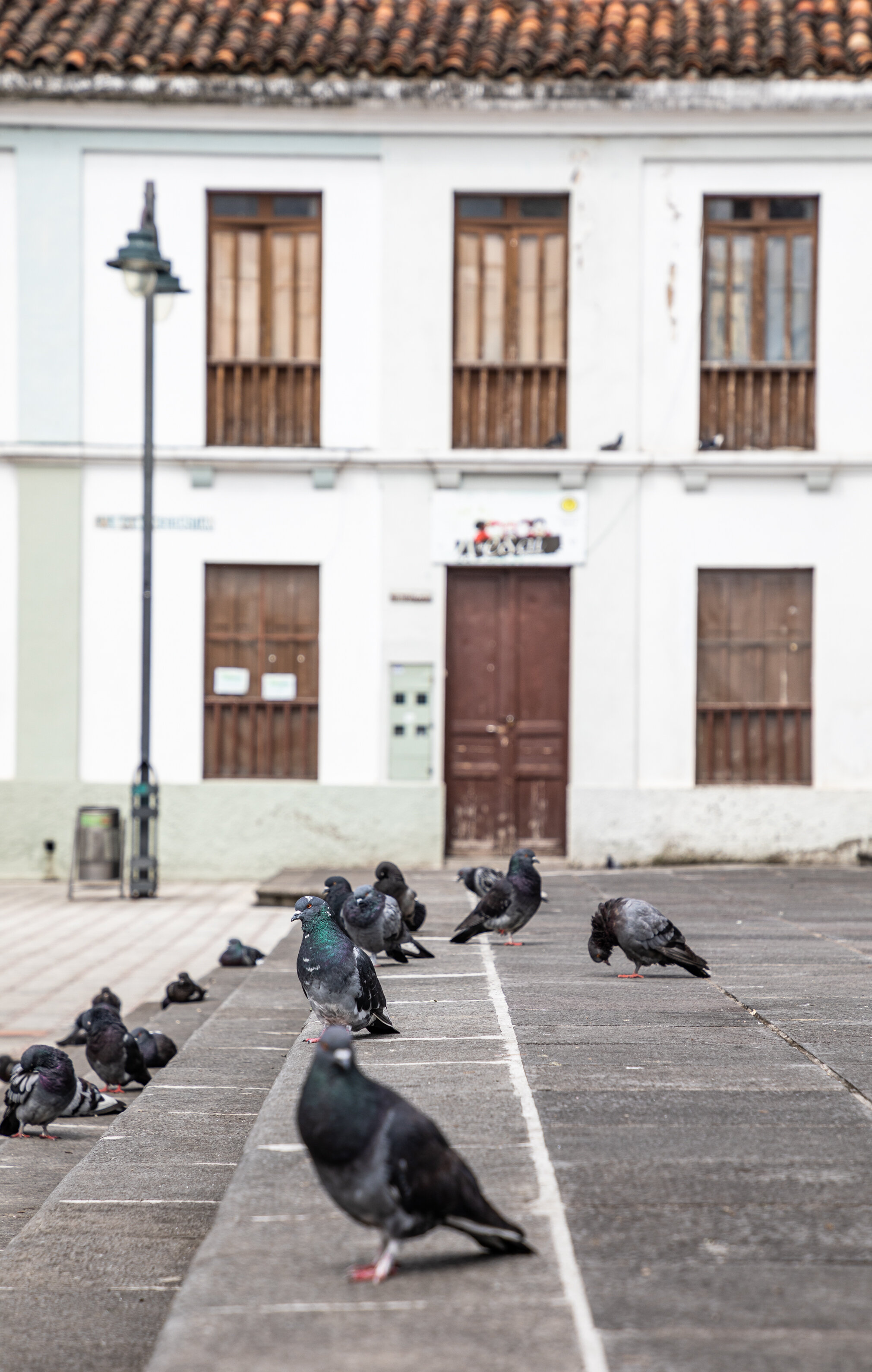






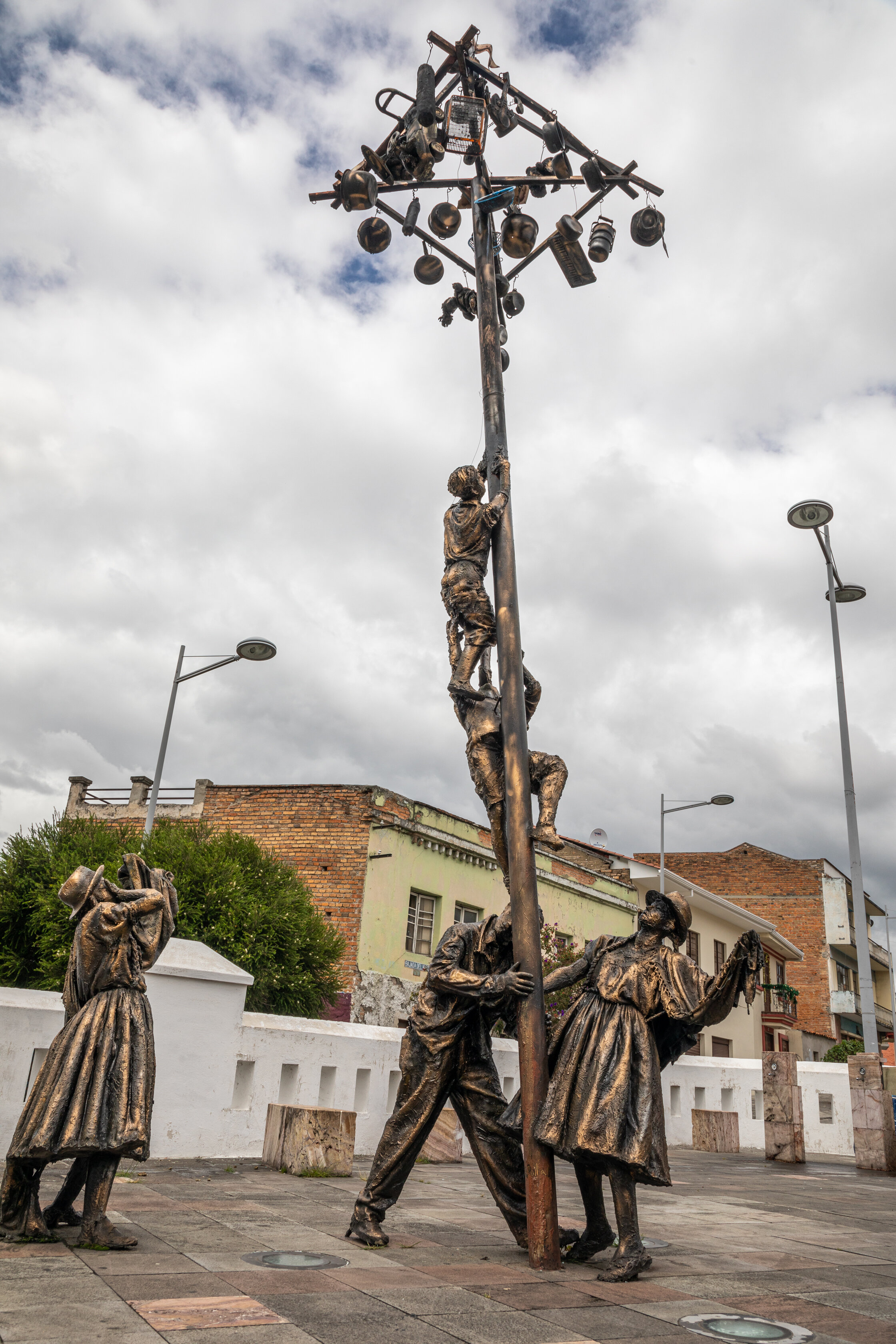


Thu was excited about sampling tropical fruits from Day 1 when our guide revealed that cherimoyas, her favorite tropical fruit, were available year-round in Ecuador for a very affordable price, but it wasn’t until our last full day in Ecuador that our itinerary allowed us time to visit the local fruit markets. By the time we arrived in Cuenca, we had already tried a handful of Ecuadorian fruits. On the Condor Trek, an orange granadilla was part of our lunch pack. It’s a smooth, round fruit with a foamy peel that cracks open easily to reveal clusters of slimy clear pouches resembling frog eggs huddled together like the brain. Though a little disturbing to look at if you’ve got an active imagination, the delicious, sweet, juicy pulp tasted like a cross between a passion fruit and an orange with a crunch. Thumbs up for the granadilla. At the lodge near Chimborazo, meals were served with fresh fruit shakes. The tomato de arbor and naranjilla juices were a little too tart, but the babaco juice we liked. Its greenish-yellow color was pleasing to look at, and it tasted like summer, a mixture of strawberries, kiwis and pineapples. Yet, by the time we reached Cuenca, we still hadn’t peeked a cherimoya anywhere! So with Flavio’s help, we left the fruit market with a bag full of interesting local fruits that we couldn’t wait to try.






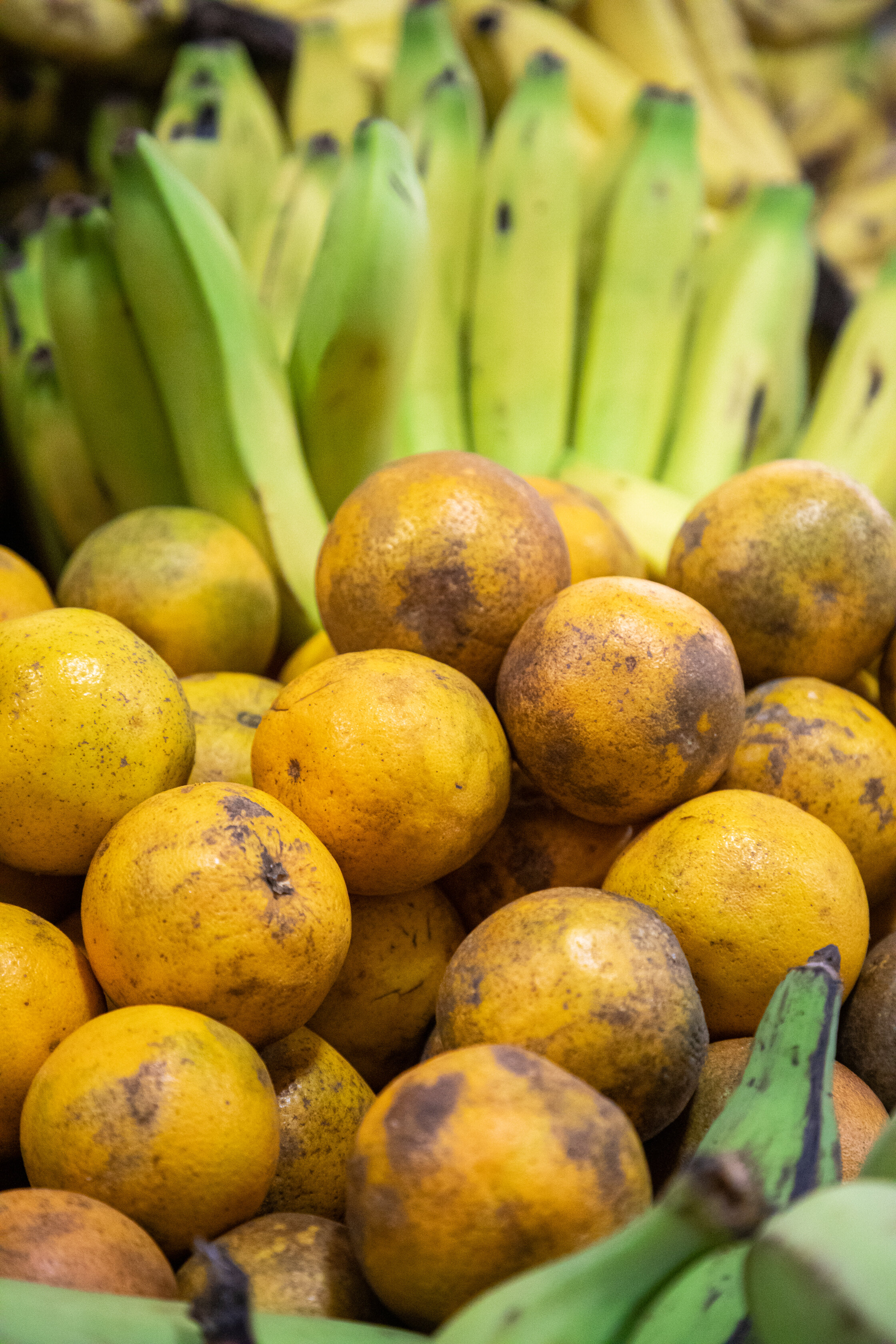
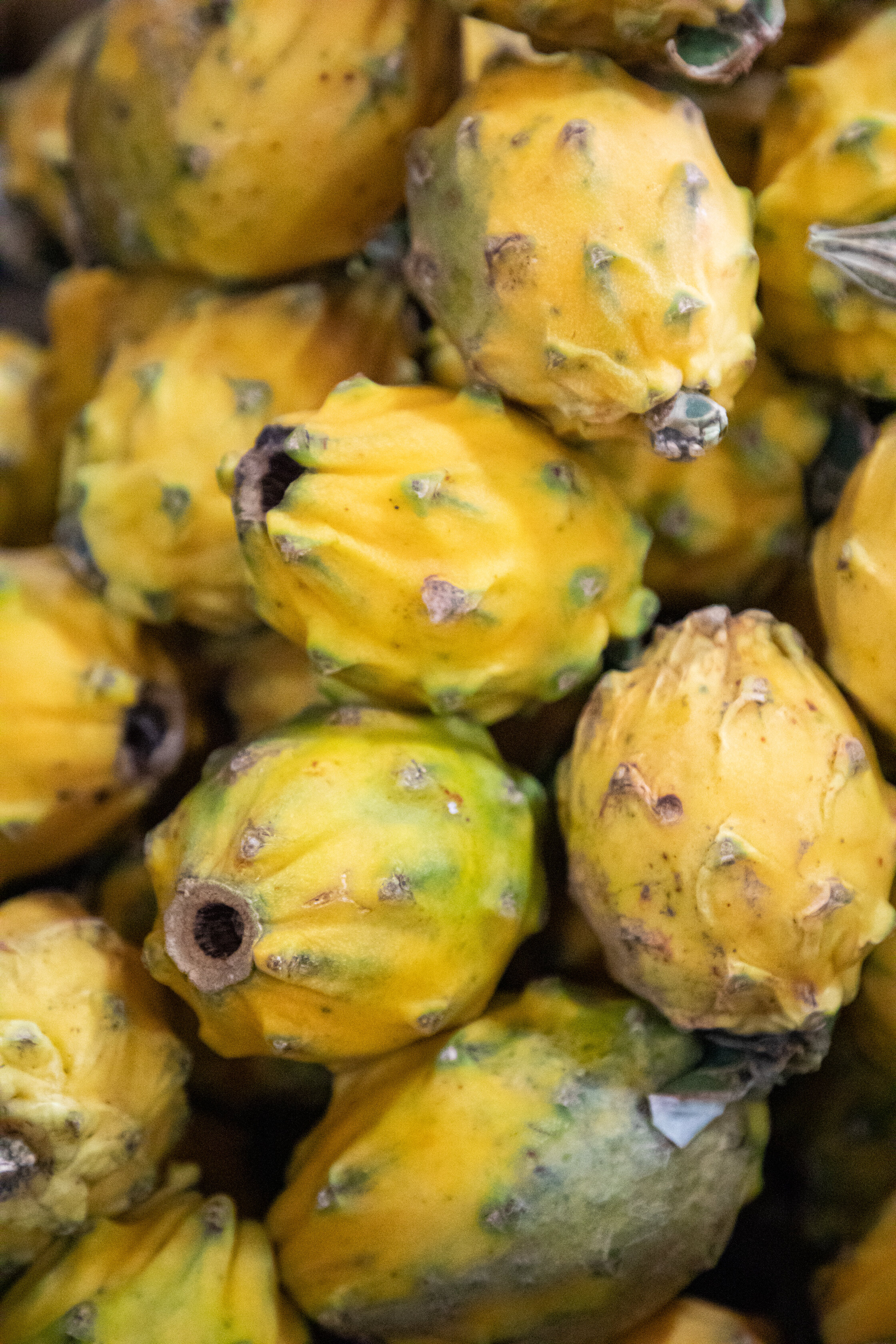

Driving into Quito, we noticed many vendors hawking their merchandise on street corners and along the narrow sidewalks. Again and again, we saw ladies carrying a bunch of large green pods that reminds us of machetes. That peaked our curiosity. Is it edible? What is it used for, if not edible? From then on, we were on the lookout for this interesting pod. We asked David about it at the lodge, and he swears it’s his favorite local fruit, the guaba. He said we had to try it. So at the fruit market in Cuenca, Flavio directed us to a vendor with three varieties of guaba. We bought all three; the smallest ones were about six inches long and the largest ones were over 2 feet. Back at the hotel, we couldn’t wait to crack them open. For us, the taste was interesting, like sucking on a moist cotton ball that had been sprayed with sugarless sweetener. There’s a smooth, dark, flat, hard seed in the middle that had to be spit out. We can only conclude that it must be one of those acquired tastes in order to really enjoy the flavor, and apparently many people do because its nickname is the Ecuadorian Ice Cream Bean.
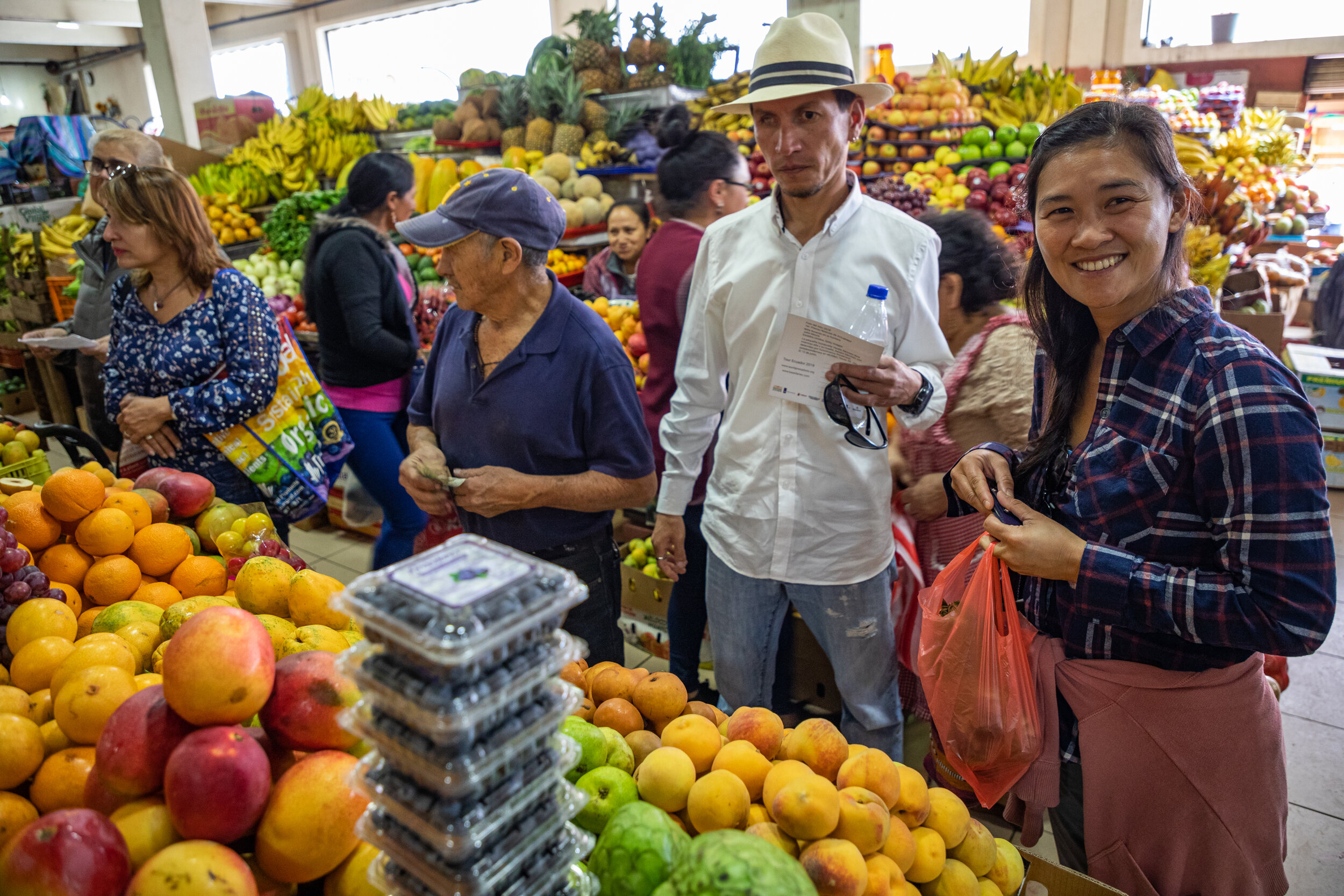
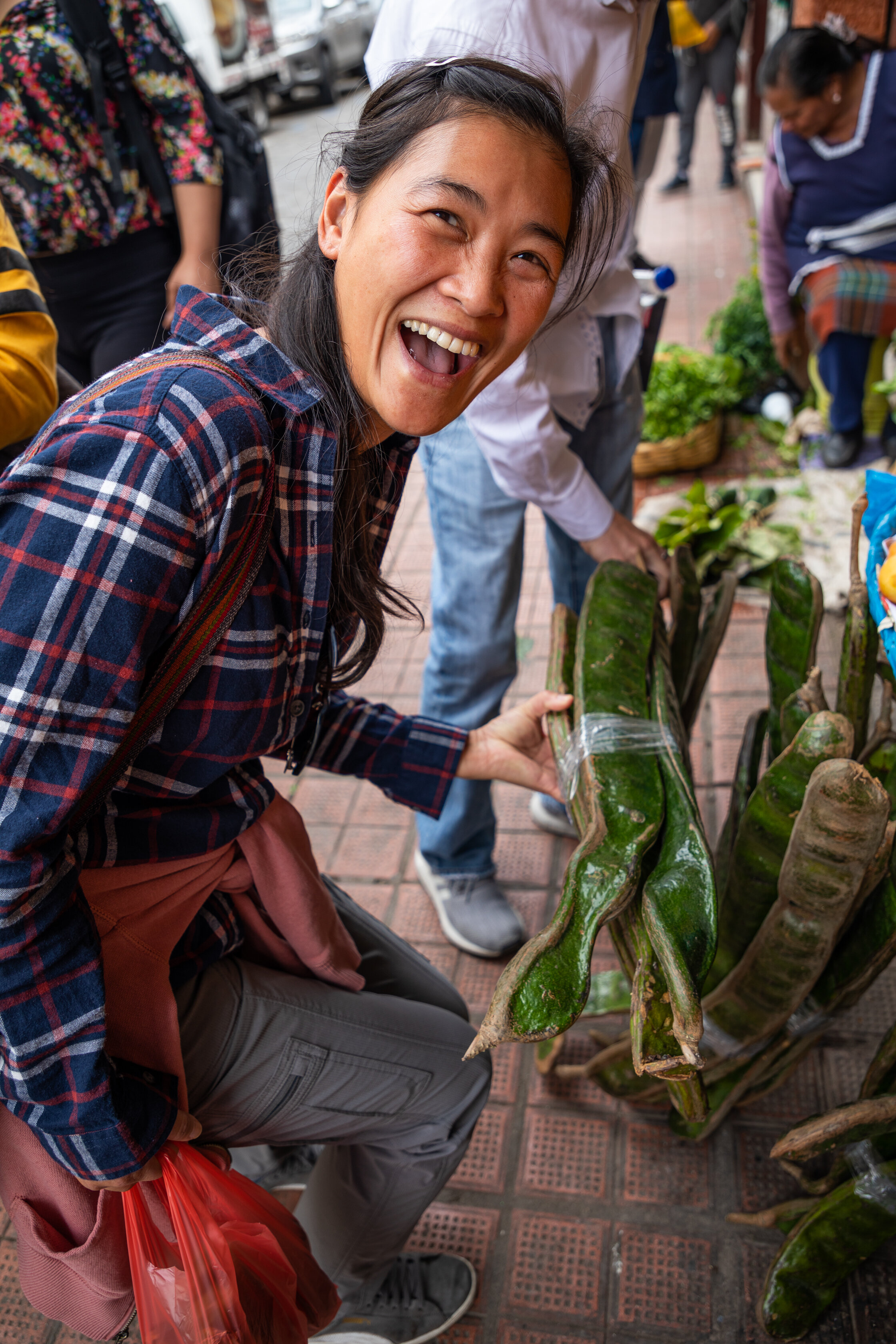

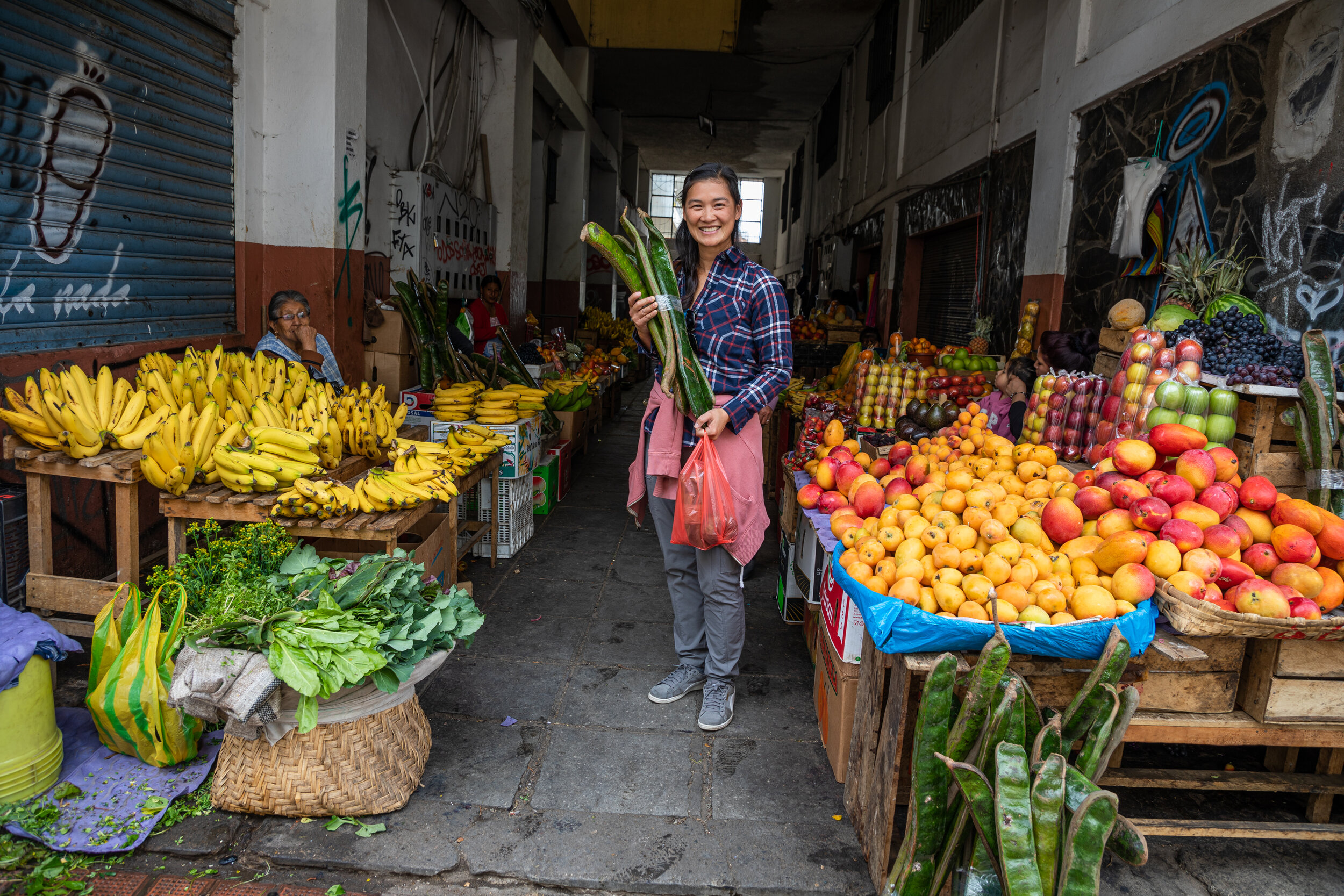








Despite the misleading name, Panama hats have never been made in Panama. They originated in Ecuador where they are still made to this day. We visited a local hat weaver and learned more than we ever needed to know about the Panama hat. We had coffee with a wonderful view of Cuenca, then headed back to our hotel where we sampled our fruit and had a relaxing evening before our flight out the next morning.
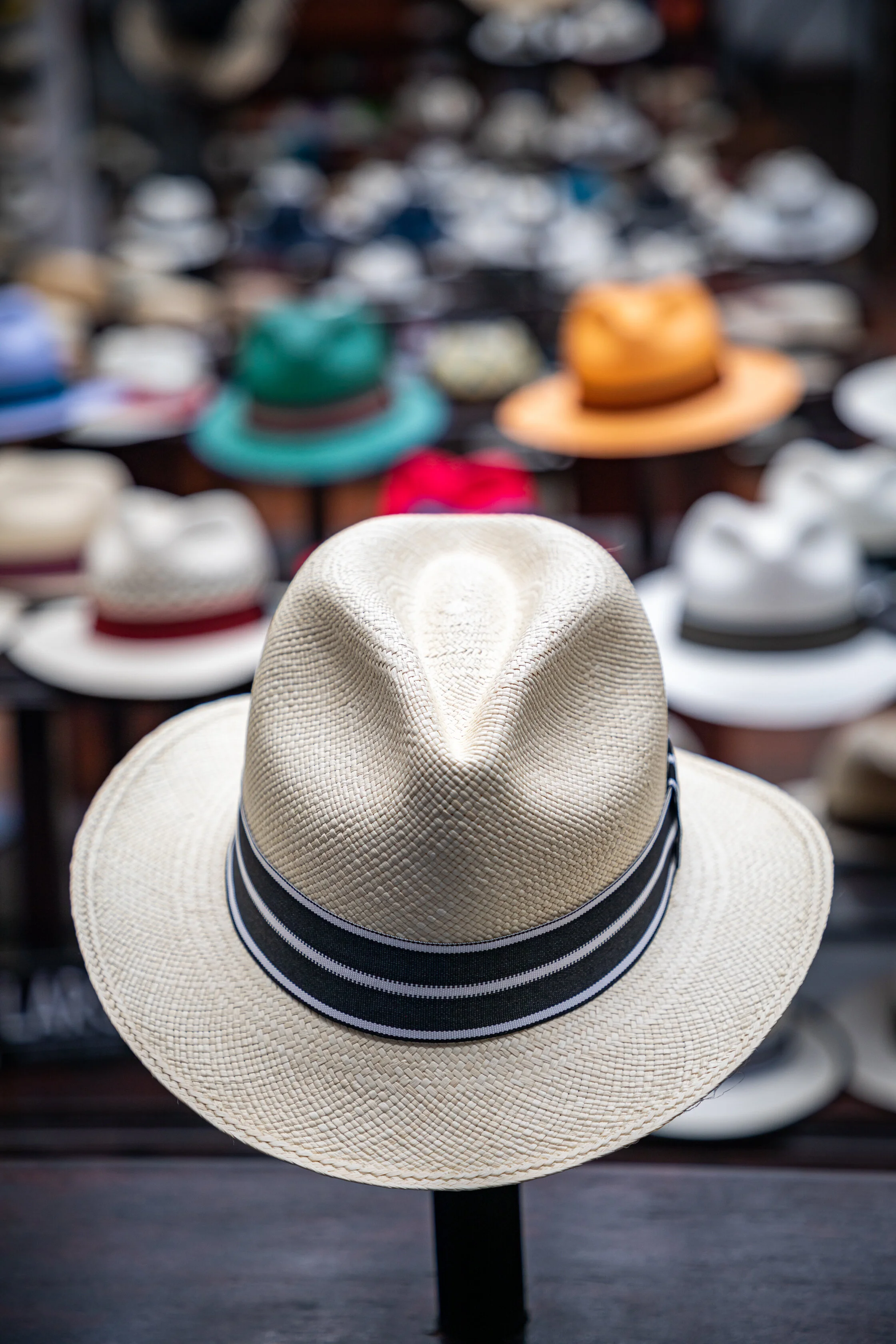













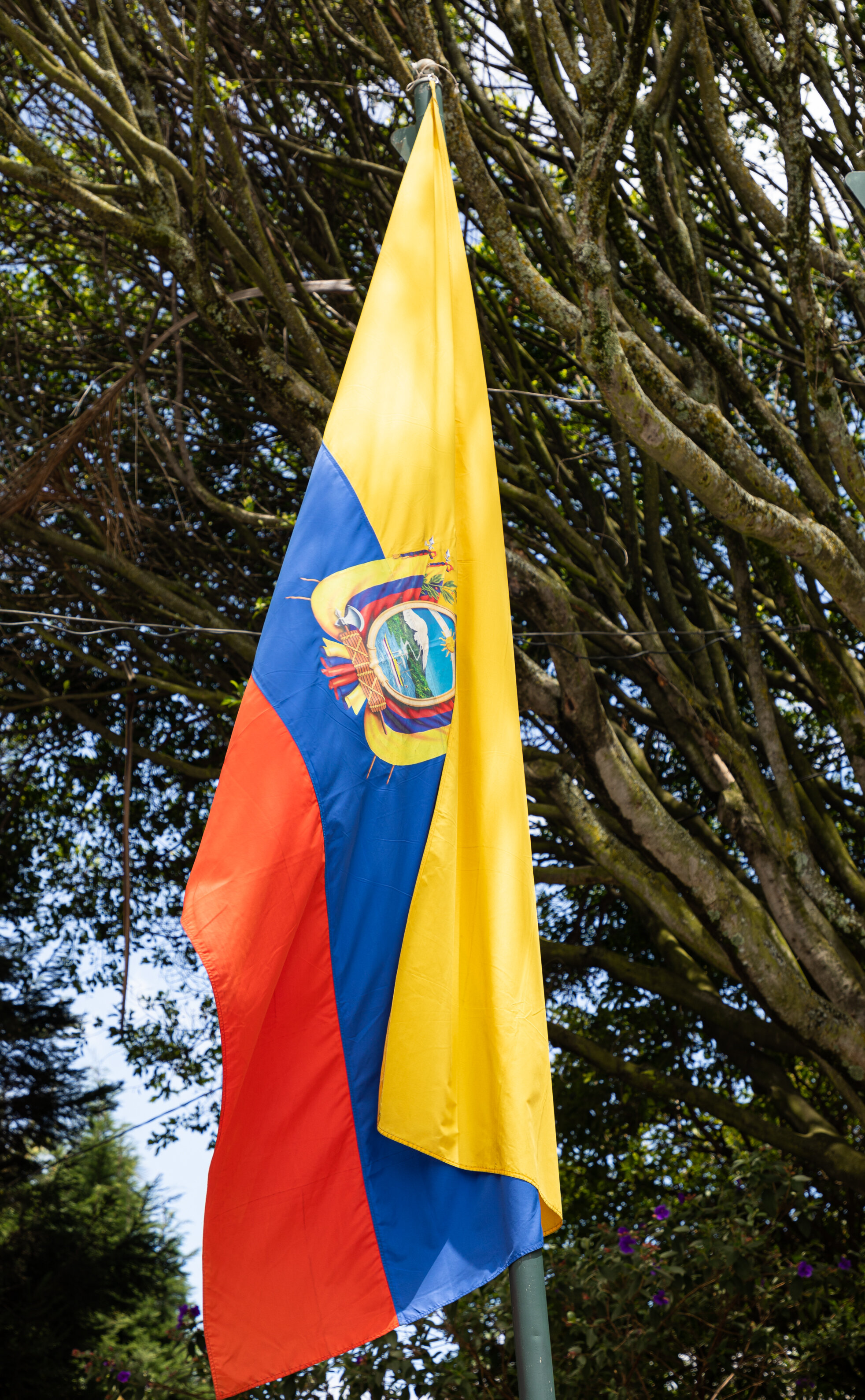







Ecuador has been a challenging country for us to visit. After years of planning, postponement, and disruptions, it was great to finally get a chance to visit this incredible country. We were truly impressed by everything we saw and experienced. For being such a small country, Ecuador is packed full with culture, nature, adventure, and everything we are searching for in our travels. I’m so happy we avoided the tourist-ridden Galapagos Islands and instead experienced the real Ecuador. Even though we covered a lot of ground, there is still so much more for us to see and do...until next time!
